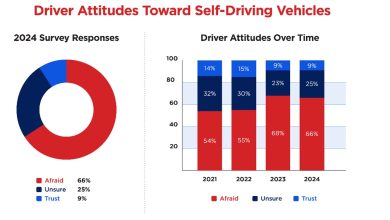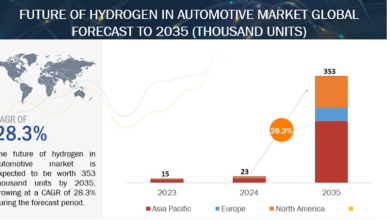IIHS introduces new ratings for partial driving automation systems

The Insurance Institute for Highway Safety (IIHS) has introduced a new ratings program to encourage automakers to incorporate more robust safeguards into their partial driving automation systems. Out of the first 14 systems tested, only one earns an acceptable rating. Two are rated marginal, and 11 are rated poor. These features are designed to assist drivers, but not replace them completely. The IIHS ratings focus on the safeguards included in these systems to prevent misuse and ensure drivers stay engaged.
“We evaluated partial automation systems from BMW, Ford, General Motors, Genesis, Lexus, Mercedes-Benz, Nissan, Tesla and Volvo,” IIHS President David Harkey said. “Most of them don’t include adequate measures to prevent misuse and keep drivers from losing focus on what’s happening on the road.”
The Teammate system available on the Lexus LS is the only system tested that earns an acceptable rating. The GMC Sierra and Nissan Ariya are both available with partial automation systems that earn marginal ratings. The LS and Ariya each offer an alternative system that earns a poor rating. The Ford Mustang Mach-E, Genesis G90, Mercedes-Benz C-Class sedan, Tesla Model 3 and Volvo S90 also earn poor ratings, in some cases for more than one version of partial automation.
The ratings only apply to the specific models tested even though manufacturers may use systems with the same names on multiple vehicles.
“Some drivers may feel that partial automation makes long drives easier, but there is little evidence it makes driving safer,” Harkey said. “As many high-profile crashes have illustrated, it can introduce new risks when systems lack the appropriate safeguards.”
Vehicles with partial automation are not self-driving — though automakers sometimes use names that imply their systems are. The human driver must still handle many routine driving tasks, monitor how well the automation is performing and remain ready to take over if anything goes wrong. Most partial automation systems have some safeguards in place to help ensure drivers remain focused and ready. These initial tests show that they’re not robust enough.
“The shortcomings vary from system to system,” said IIHS Senior Research Scientist Alexandra Mueller, who led the development of the new program. “Many vehicles don’t adequately monitor whether the driver is looking at the road or prepared to take control. Many lack attention reminders that come soon enough and are forceful enough to rouse a driver whose mind is wandering. Moreover, many people can use it despite not wearing seat belts or switching off other vital safety features.”
Today’s partial automation technology uses cameras, radar, or other sensors to “see” the road and other vehicles. The technology encompasses specific systems such as Tesla’s Autopilot and GM’s Super Cruise, along with feature bundles offering similar capabilities. It combines adaptive cruise control (ACC), lane centering and various other driver assistance features. The ACC maintains a speed chosen by the driver, adjusting to maintain a safe following distance and accelerating when clear. Lane centering continuously adjusts the steering to help the driver keep the vehicle centered in the travel lane. Automated lane changing is also becoming more common.
The new IIHS ratings aim to encourage safeguards that can help reduce intentional misuse and prolonged attention lapses. They also aim to discourage certain design characteristics that increase risk in other ways. Examples encompass systems that individuals can operate when they turn off automatic emergency braking (AEB) or unbuckle seat belts.
Scores awarded based on a battery of tests conducted over multiple trials, and some performance areas weigh more heavily than others.
Whenever feasible, we conduct tests on a closed test track. For certain tests that require public road conditions, a second IIHS employee sits in the front passenger seat. They monitor the driving environment and the vehicle systems.
In some cases, manufacturers are already making changes to their systems through software updates. This may result in adjustments to these ratings. The two Tesla systems evaluated, for example, used software that preceded the most recent recall in December 2023.
IIHS expects improvements to be rapid.
“These results are worrying, considering how quickly vehicles with these partial automation systems are hitting our roadways,” Harkey said. “But there’s a silver lining if you look at the performance of the group as a whole. No single system did well across the board, but in each category at least one system performed well. That means the fixes are readily available and, in some cases, may be accomplished with nothing more than a simple software update.”



